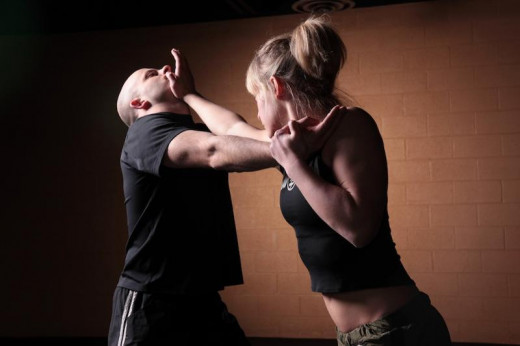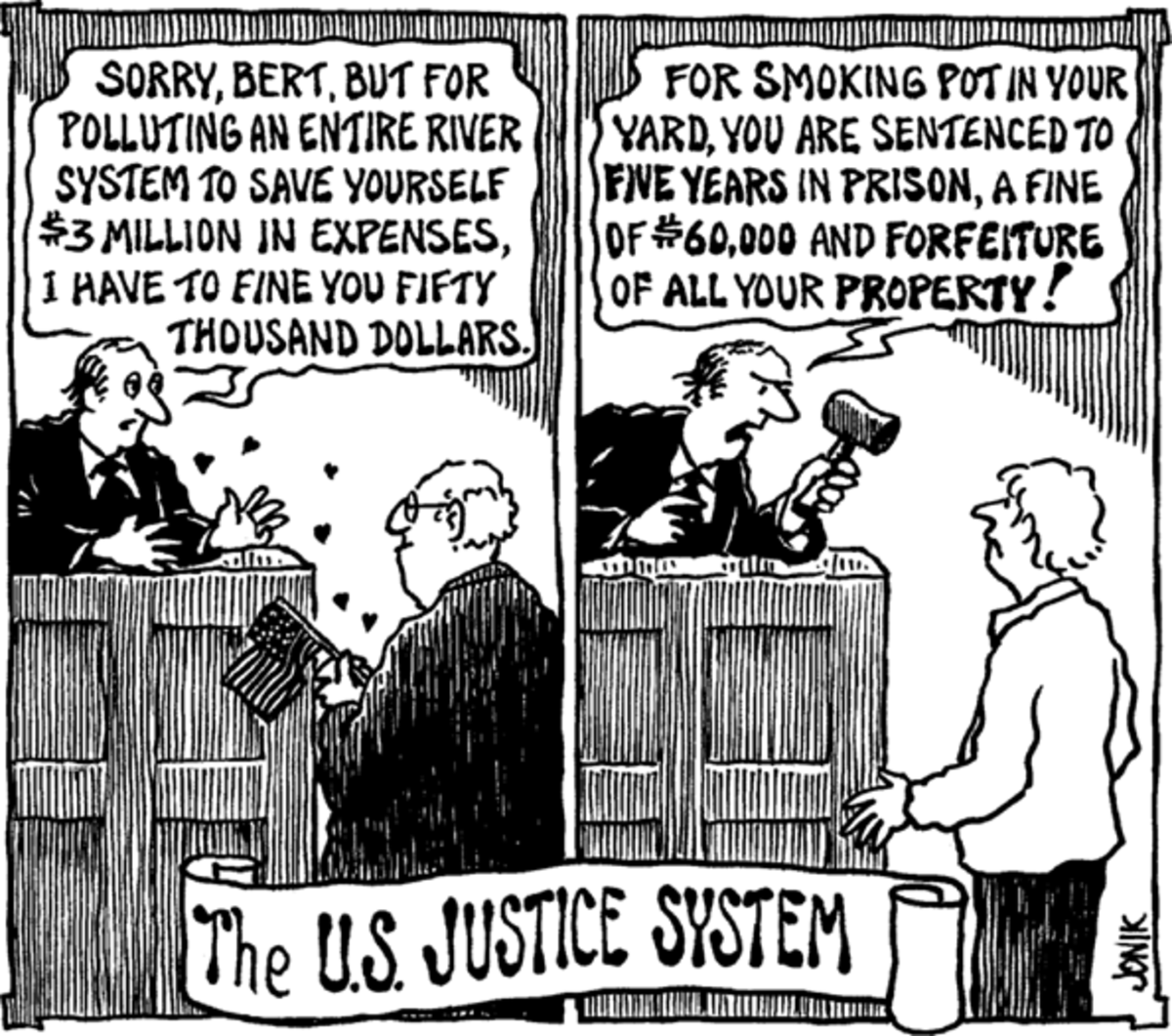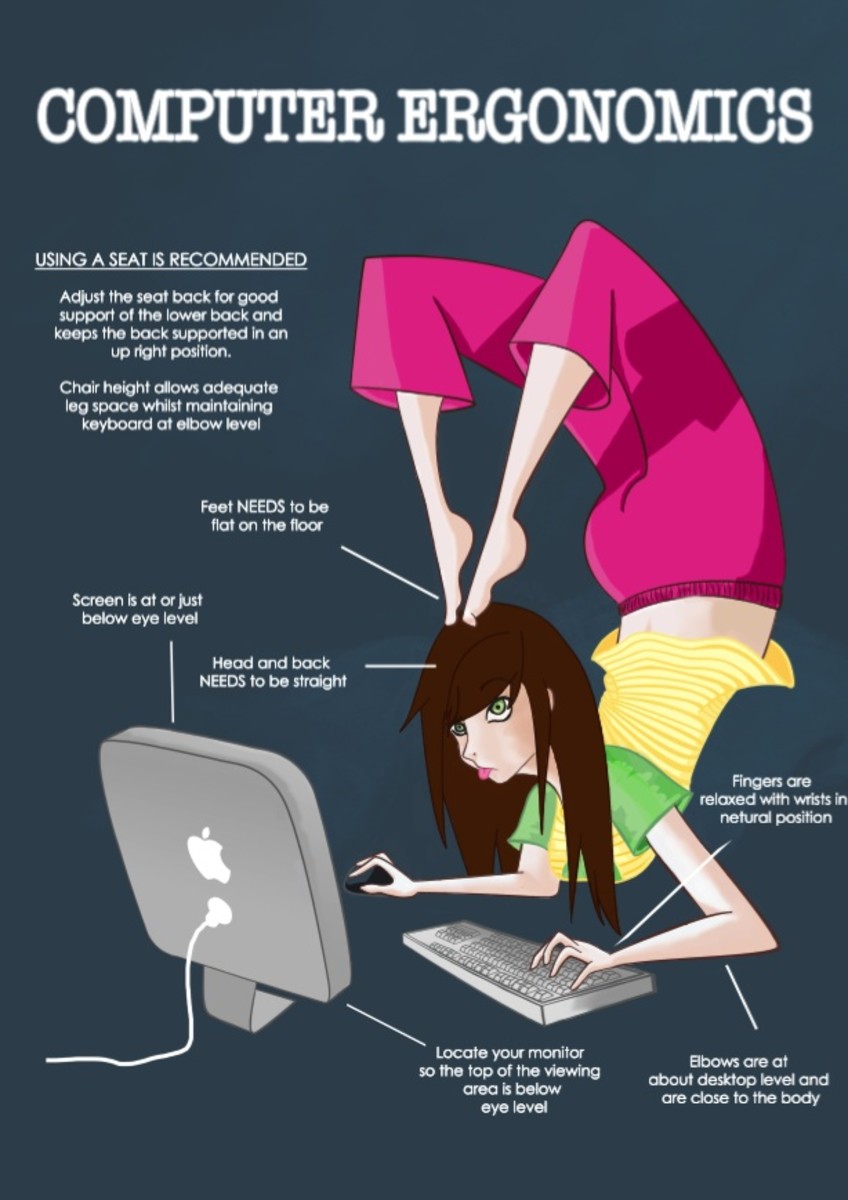How to Prevent Rape: The Routine Activities Theory
Before You Read
I did write an article about campus safety along with rape. This article goes more in depth and applies a criminal justice theory about how victims are picked. This paper was done for my criminal justice class, Theories of Crime. The paper has been reviewed and supported by great sources. This is an A paper. Any use of this for papers is plagiarism.
Also this article as well as my other article, I do not get paid for because of the content. I feel that it is important information for people to know to stay safe.

According to Amy Cass, “for every 1,000 women attending institutions of higher education, there may well be 35 incidents of rape in a given academic year.” If 10,000 students are female, in result it would be predicted that 350 of those women would be raped. With this estimated statistic in mind, more women than in recent years are pursuing a higher degree of education (Cass, 2007, p. 350). According to the American Census Bureau, the American population is 308,745,538. Out of that number, women represent half of that statistic. To understand the victimization of rape one must first understand what rape is. Rape has different definitions for different people. Perspectives on rape are different in foreign countries creating different laws. The routine activities theory helps in the explanation of how rapists find their victims and how to prevent becoming a victim.
According to the FBI’s Uniform Crime Reporting Program, “Forcible rape is the carnal knowledge of a female forcibly and against her will. Attempts or assaults to commit rape by force or threat of force are also included; however, statutory rape (without force) and other sex offenses are excluded.” In previous years, women were stereotypically the victim in all cases with the male being the assailant. The perspective of women in the past was surrounded by the idea that women were frail beings that needed a man to protect them. It was not a conceivable thought that a man could be raped by a weak woman or by another male. After women demanded their rights, the view that women were weak changed to women being equal to men. Women were now equally as capable of raping a man (Brown, Esbensen, & Geiss, 2010, p. 42). While women can rape a man, they are statistically lower in convicted perpetrators. “The one percent of women accused of rape almost invariably are accessories” (p. 406). By accessory to crime, women are most likely keeping the victim impaired while the male assailant does the actual rape of the victim.
Rapists have been categorized as “lower-class, minority, urban youth, who experience an environment hospitable to crimes of violence.” Studies have been conducted on convicted rapists to see if there is a way to identify whether one will become a rapist. Psychological studies have discovered that “rapists find them to be driven by a quest for power, by anger, or by sadism” (p. 407). Rapists can be found in the workplace, on the street, in a classroom, at the bar, and even on the internet. Sex in today’s society has become more acceptable and more public than it has been in former years. Sex is on television, movies, and always accessible on the internet. In all these media sources, women have become degraded and reinvented to satisfy males. The line between fantasy and real becomes distorted in some men’s minds which lead to the desire of immediate satisfaction (Schwartz, DeKeseredy, Tait, & Alvi, 2001).
“Some men assume that all women are ‘fair game,’ that all beyond a certain age are willing to engage voluntarily in sexual intercourse and that the rejection of their overture represents a rejection of them and not their behavior” (Brown, 2010, p. 404).
Their mind justifies that even though they are doing wrong to another that it is fine because the end result for them is satisfaction and relief. The actual act causes a temporary fix for the release built up emotion and urges (Brown, 2010, p.42).
Punishment for rape in other countries can range from s months to the death penalty depending on the country and other circumstances such as kidnapping. In America, marital rape is against the law. In other countries though, if an assailant marries their victim, they drop the rape charges. The virginity of women in most religious communities is very important to a woman and the choosing of a proper man. Families force rape victims to marry their rapist because no other man would want to marry the woman. In other nations, it is not simply about criminal justice, but about honor and pride (Warrick, 2005, p.319-322).

Does routine increase the chances that a person can become a victim of rape? To fully understand the routine activities theory, one must understand what the accepted definition of routine means. According to the Oxford English Dictionary, routine is defined as “a regularly followed procedure.” As one adjusts to life they develop a routine that can help them function on a day to day basis. This routine makes a person predictable. This makes them easier to target as a victim. The routine activities theory was introduced by Lawrence Cohen and Marcus Felson. The theory states that “available opportunities are an important component in crime calculus. Choices in lifestyle on part of potential victims may create or curtail crime opportunities for the motivated offender.” Motivated offenders, suitable targets, and lack of capable guardianship are the three basic components that are found in the theory for why crime occurs. If an offender commits a crime and is not punished in anyway, their perspective of the crime is that the benefits outweigh the consequences (Brown, 2010, p. 173-174).
According to Amy Cass, college campuses are prime areas for targeting victims. 80% of student rape victims are raped by a fellow classmate. This is because of close contact with a lot of different people during the day. At small campuses, it is easier to find another person that a student met earlier in the day. At larger campuses, there are always different people walking around that it is hard to acknowledge if someone was in actuality a student or faculty member. The more active of students that are always on campus and always interacting with people increase their chances of being targeted. People who party to get drunk increase their chance of being victimized. Consumption of drugs and alcohol, especially combined, takes away the ability to rationalize through a situation. One in four undergraduate males has admitted that they serve a female multiple alcoholic drinks in hope of making her drunk in order for them to have sex. It is not illegal to have sex with a drunk female or male as long as it is consensual. Greek life also shows a higher percentage of attempted rape against females. This is most likely due to the fact that Greek life has more parties and is more involved with the school (Cass, 2007, p. 351-354).
Why do males at parties take advantage of incapacitated women? As mentioned before, rapists like to feel dominance. In college, the presence of statutory rape is more dominant than forcible rape because males use methods that make the female less likely to object: drugs and alcohol. It has been exhibited that males support one another when it comes to sexually assaulting their girlfriends, dating partner, or just a female at a party. It is viewed as a game. The males see this as acceptable since the girl does not fight them off because she is incapable to. The act is being rewarded by the acceptance of their friends. If not punished, the act in the perpetrator’s mind is not harming anyone (Schwartz, DeKeseredy, Tait, & Alvi, 2001, p. 636-646).
Before technology, people recorded their lives and feelings into a journal that was not publicly shared. With social networking and blogs, no one’s life is a secret. Facebook keeps people updated on their friend’s lives based on status updates, pictures, and check-ins. Tumblr, a popular blogging site, reveals the raving inner thoughts of adolescences. Social media has even gotten to the point to develop a phone application allows people to check-in to where they are and show their friends. These media outlets increase victimization highly. If targeted to be a victim, the rapist can find their victim with a quick search on the computer. Victim targeting on the internet has to do more with attractiveness of a person’s picture or the image of the type of person through instant messaging. Anything can suggest what type of person someone is in real life through their relationship status, their screen name, and their email addresses are just a few examples. What makes online relationships more dangerous is when people want to meet outside the internet. It is the meetings that heighten victimization. Predators online have a vast amount of people to choose from. If their target says that they do not want to meet, the predator can stop pursuing and start a new chat with another person. There are organizations set up to try to pick out predators, but safety online has to do more the person who decides to post their location and chats to strangers (Reyns, Henson & Fisher, 2011, p. 1159-1163).
There are ways to decrease the likelihood of being a victim. Changing up routines in one’s daily life substantially helps victim targeting. Taking a different walking route to class can help. Be more aware of the environment and the people in it. Getting to know what belongs in certain areas and what people do not can help a potential victim target the threat. Make smart decision when in a reckless environment such as parties or at clubs. Keeping a lid on a drink or just keeping hold of a drink can help reduce the chance of something being slipped in the drink. Keeping a limit of how much alcohol consumption keeps one clear minded in case there is an emergency. Parking under a light and close to a building prevents an assailant of attacking a person without being noticed. Staying in camera range can help in identifying the assailant and rescue a person. The most effective way to stop men from raping is to make men aware of what the wrong they are doing. Men are the most common assailant. It has been said that some are supported by other males to rape a women. A way to prevent males from committing the crime is to educate them on the dangers and consequences. More campuses are creating all male support groups to help males understand and relate with others that are like them.
Offenders cannot commit a crime without suitable targets. With suitable guardianship, rapists can be more easily caught and punished (Brown, 2010). Researchers are still researching and developing ways to prevent rape in the future. The routine activities theory helps victims to realize how the crime is being committed in order to change their lifestyle to be safer. Education of what rape is and the consequences help in the deterrence. Also keeping people updated about what it means to be legally raped as well will help with the false reports of rape. Support groups for women raped also helps women speak out and not be ashamed of being raped. Being alert and cautious is the best way to live a healthy, safe life.
References
Brown, S.E., Esbensen, F., & Geis, G. (2010). Criminology: Explaining crime and its content. New Providence, NJ: Matthew Bender & Company, Inc.
Cass, A. (2007). Routine activities and sexual assault: An analysis of individual- and school-level factors. Violence and Victims, 22(3), 350-364. Retrieved from http://search.proquest.com/criminaljusticeperiodicals/docview/208556875/abstract/1335B222A763EF280BB/13?accountid=14968
Reyns, B., Henson, B., & Fisher, B. (2011). Being pursued online applying cyberlifestyle–routine activities theory to cyberstalking victimization. Criminal Justice and Behavior, 38(11), 1149-1169. Retrieved from http://ejournals.ebsco.com/Direct.asp?AccessToken=4Y96YYY8K9S5J29L1L15BTLULLJJ8YTKPC&Show=Object
Schwartz, M., DeKeseredy, W., Tait, D., & Alvi, S. (2001). Male peer support and a feminist routine activities theory: Understanding sexual assault on the college campus. Justice Quarterly, 18(3), 623-649. Retrieved from http://search.proquest.com/criminaljusticeperiodicals/docview/228161782/abstract/1335B1F19981280478D/1?accountid=14968
U.S. Census Bureau. (2011, October 13). State & county quick facts. Retrieved from http://quickfacts.census.gov/qfd/states/00000.html
Warrick, C. (2005). The vanishing victim: Criminal law and gender in Jordan. Law & Society Review, 39(2), 315-348. Retrieved from http://search.proquest.com/criminaljusticeperiodicals/docview/226924430/abstract/1335B5DB468615E9BBF/1?accountid=14968





